Natylie Baldwin's Blog, page 260
June 29, 2016
Some Thoughts on the Dynamics of Brexit and the Media Response to It
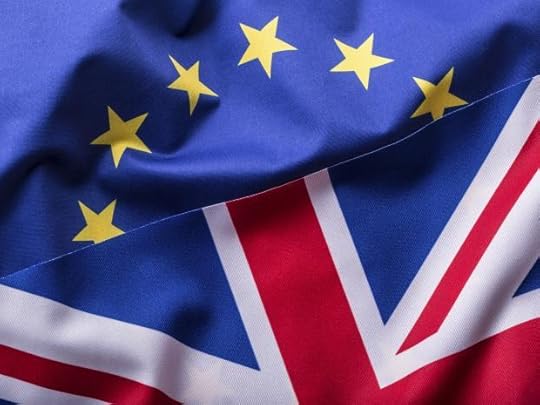
(http://www.independent.co.uk/news/uk/...)
I have no opinion on Brexit and see it as an issue that is up to the British people to decide for themselves. However, I do think the decision of the British to vote to leave the EU is understandable, whether one agrees with it or not. Seeking to understand it is imperative as Glenn Greenwald writes in this fine analysis, excoriating many in the corporate media for their judgmentalism and refusal to understand, instead reducing a significant portion of the British public to caricatures of buffoons and racists. Here are some highlights:
The decision by UK voters to leave the EU is such a glaring repudiation of the wisdom and relevance of elite political and media institutions that — for once — their failures have become a prominent part of the storyline.
Media reaction to the Brexit vote falls into two general categories: (1) earnest, candid attempts to understand what motivated voters to make this choice, even if that means indicting one’s own establishment circles, and (2) petulant, self-serving, simple-minded attacks on disobedient pro-leave voters for being primitive, xenophobic bigots (and stupid to boot), all to evade any reckoning with their own responsibility. Virtually every reaction that falls into the former category emphasizes the profound failures of Western establishment factions; these institutions have spawned pervasive misery and inequality, only to spew condescending scorn at their victims when they object….
…In sum, the West’s establishment credibility is dying, and their influence is precipitously eroding — all deservedly so. The frenetic pace of online media makes even the most recent events feel distant, like ancient history. That, in turn, makes it easy to lose sight of how many catastrophic and devastating failures Western elites have produced in a remarkably short period of time.
In 2003, U.S. and British elites joined together to advocate one of the most heinous and immoral aggressive wars in decades: the destruction of Iraq; that it turned out to be centrally based on falsehoods that were ratified by the most trusted institutions, as well as a complete policy failure even on its own terms, gutted public trust.
In 2008, their economic worldview and unrestrained corruption precipitated a global economic crisis that literally caused, and is still causing, billions of people to suffer — in response, they quickly protected the plutocrats who caused the crisis while leaving the victimized masses to cope with the generational fallout. Even now, Western elites continue to proselytize markets and impose free trade and globalization without the slightest concern for the vast inequality and destruction of economic security those policies generate.
In 2011, NATO bombed Libya by pretending it was motivated by humanitarianism, only to ignore that country once the fun military triumph was celebrated, thus leaving a vacuum of anarchy and militia rule for years that spread instability through the region and fueled the refugee crisis. The U.S. and its European allies continue to invade, occupy, and bomb predominantly Muslim countries while propping up their most brutal tyrants, then feign befuddlement about why anyone would want to attack them back, justifying erosions of basic liberties and more bombing campaigns and ratcheting up fear levels each time someone does. The rise of ISIS and the foothold it seized in Iraq and Libya were the direct byproducts of the West’s military actions (as even Tony Blair admitted regarding Iraq). Western societies continue to divert massive resources into military weaponry and prisons for their citizens, enriching the most powerful factions in the process, all while imposing harsh austerity on already suffering masses. In sum, Western elites thrive while everyone else loses hope.
These are not random, isolated mistakes. They are the byproduct of fundamental cultural pathologies within Western elite circles — a deep rot. Why should institutions that have repeatedly authored such travesties, and spread such misery, continue to command respect and credibility? They shouldn’t, and they’re not. As Chris Hayes warned in his 2012 book Twilight of the Elites, “Given both the scope and depth of this distrust [in elite institutions], it’s clear that we’re in the midst of something far grander and more perilous than just a crisis of government or a crisis of capitalism. We are in the midst of a broad and devastating crisis of authority.”…
…There is no one, unifying explanation for Brexit, or Trumpism, or the growing extremism of various stripes throughout the West, but this sense of angry impotence — an inability to see any option other than smashing those responsible for their plight — is undoubtedly a major factor. As Bevins put it, supporters of Trump, Brexit, and other anti-establishment movements “are motivated not so much by whether they think the projects will actually work, but more by their desire to say FUCK YOU” to those they believe (with very good reason) have failed them.
Obviously, those who are the target of this anti-establishment rage — political, economic, and media elites — are desperate to exonerate themselves, to demonstrate that they bear no responsibility for the suffering masses that are now refusing to be compliant and silent. The easiest course to achieve that goal is simply to demonize those with little power, wealth, or possibility as stupid and racist: This is only happening because they are primitive and ignorant and hateful, not because they have any legitimate grievances or because I or my friends or my elite institutions have done anything wrong. As Vice’s Michael Tracey put it:
Because that reaction is so self-protective and self-glorifying, many U.S. media elites — including those who knew almost nothing about Brexit until 48 hours ago — instantly adopted it as their preferred narrative for explaining what happened, just as they’ve done with Trump, Corbyn, Sanders, and any number of other instances where their entitlement to rule has been disregarded. They are so persuaded of their own natural superiority that any factions who refuse to see it and submit to it prove themselves, by definition, to be regressive, stunted, and amoral.
Indeed, media reaction to the Brexit vote – filled with unreflective rage, condescension, and contempt toward those who voted wrong – perfectly illustrates the dynamics that caused all of this in the first place. Media elites, by virtue of their position, adore the status quo. It rewards them, vests them with prestige and position, welcomes them into exclusive circles, allows them to be close to (if not themselves wielding) great power while traveling their country and the world, provides them with a platform, fills them with esteem and purpose. The same is true of academic elites, financial elites, and political elites. Elites love the status quo that has given them, and then protected, their elite position.
Because of how generally satisfied they are with their lot, they regard with affection and respect the internationalist institutions that safeguard the West’s prevailing order: the World Bank and IMF, NATO and the West’s military forces, the Federal Reserve, Wall Street, the EU. While they express some piecemeal criticisms of each, they literally cannot comprehend how anyone would be fundamentally disillusioned by and angry with these institutions, let alone want to break from them. They are far removed from the suffering that causes those anti-establishment sentiments. So they search and search in vain for some rationale that could explain something like Brexit, or the establishment-condemning movements on the right and left, and can find only one way to process it:These people are not motivated by any legitimate grievances or economic suffering, but instead they are just broken, ungrateful, immoral, hateful, racist, and ignorant.
Read the full article here:
For an in-depth analysis on the myth of the European Union versus the reality, see:
The Left and the EU: Why Cling to This Reactionary Institution? by Joseph Richardson at:
June 27, 2016
Online Trove of Photos Documenting 150 Years of Russian History
I had to implement the Google translate option in order to read the captions. A few of my favorites to give you a sampling:
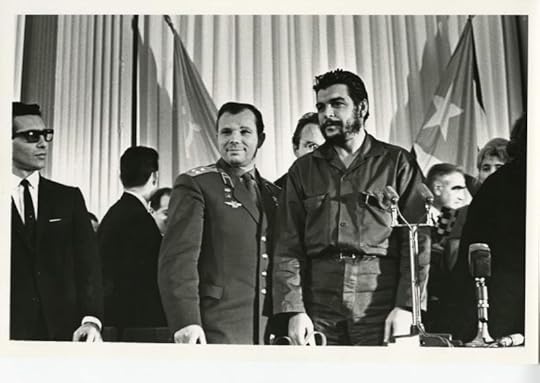
(Yuri Gagarin and Che Guevara, 1964; https://russiainphoto.ru/exhibitions/...)
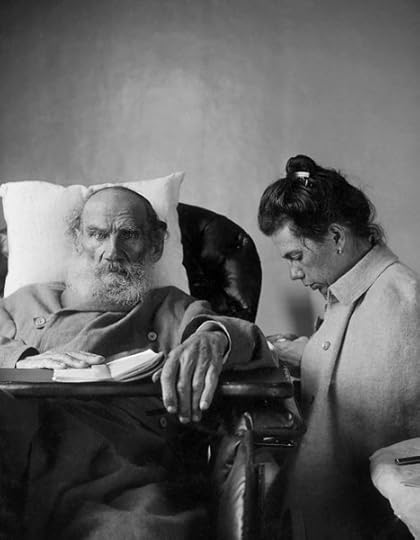
(Leo Tolstoy and his daughter, 1902; https://russiainphoto.ru/exhibitions/...)
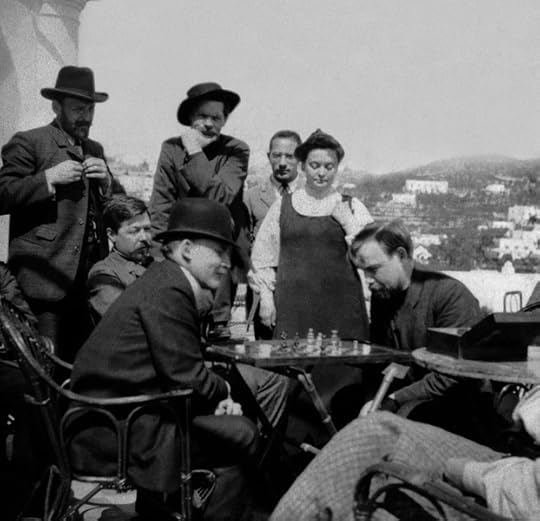
(Vladimir Lenin visiting Maxim Gorky in Capri, 1908; https://russiainphoto.ru/exhibitions/...)

(Ballerina Tamara Karsavina, circa 1910-1914; https://russiainphoto.ru/exhibitions/...)
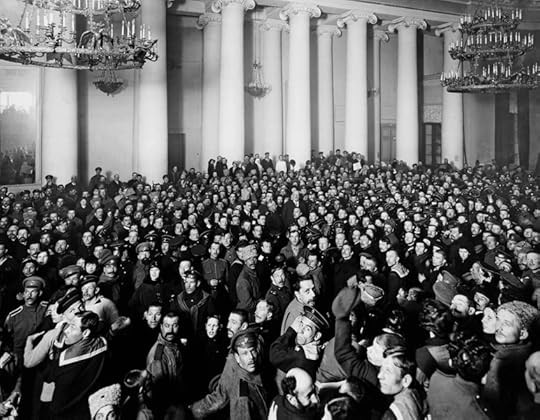
(February Revolution, when soldiers and sailors sided with the rebels, 1917; https://russiainphoto.ru/exhibitions/...)
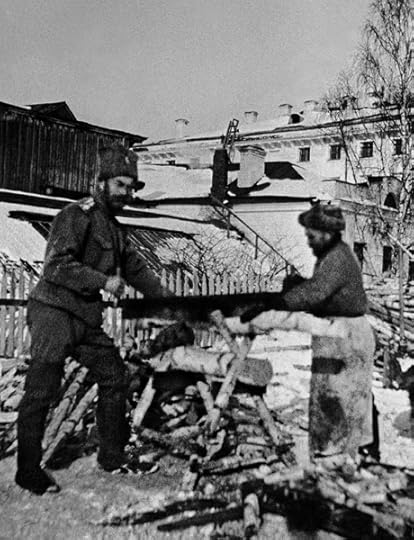
(Emperor Nicholas II in exile, 1918; https://russiainphoto.ru/exhibitions/...)
Read more about the project and view more photos at:
https://russiainphoto.ru/about/
June 24, 2016
“Extending American Power” – A Sneak Peek at What a Clinton Foreign Policy May Look Like
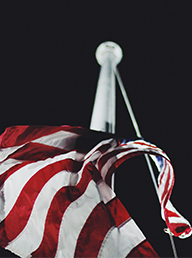
(Extending American Power: http://www.cnas.org/extending-America...)
The Center for a New American Security (CNAS), a think tank connected to the Democratic Party, particularly with Obama’s transition team at the beginning of his first term, published a 20-page policy paper last month called “Extending American Power.”
That this think tank is already close to the Democratic Party establishment is not the only salient fact in relation to this policy paper. It is also relevant that this paper was signed off on, with an introduction co-authored by, Robert Kagan. For those who may need a refresher, Kagan is the philosophical standard bearer of Neoconservative thought in western corporate media (New Republic and The Washington Post) as well as co-founder of Project for a New American Century (PNAC) which pushed for the invasion of Iraq in the 1990’s and early 2000’s. Kagan believes that the U.S. has a right and duty to be the policeman of the world and to expend whatever resources are necessary to do so under the guise of spreading (imposing) Washington’s definition of democracy by manipulation and force. It is imperialism with a more palatable cover, using terms like human rights and democracy to get average Americans to swallow it. Despite the fact that these democracy-spreading regime change attempts have produced death, chaos and blowback wherever they’ve been tried, such as Iraq, Kagan continues to advocate them with only the minor cosmetic change of now calling himself a “liberal interventionist” rather than a Neocon. It should also be noted that Kagan is married to Victoria Nuland, who, in her job as Assistant Secretary of State for European Affairs, played a leading role in the 2014 coup in Ukraine.
The Neocons have now successfully inserted themselves into the Democratic Party where they’ve often teamed up opportunistically with the resident hawks there, such as Zbigniew Brzezinski and his protégé, Madeline Albright. Indeed, Albright served on the Board of Directors of CNAS only a few years ago.
The policy paper is therefore what one would likely expect from the Neocon godfather who has endorsed Hillary Clinton explicitly for her Neocon foreign policy. In 2014, Kagan said the following to the New York Times:
“I feel comfortable with her on foreign policy. If she pursues a policy which we think she will pursue it’s something that might have been called neocon, but clearly her supporters are not going to call it that; they are going to call it something else.”
In the paper’s introduction, the authors express their desire to influence a new presidential administration directly: “…with a mandate to examine the degree to which the United States can and should play a leadership role internationally, and with an eye toward policymaking in a new administration.”
The paper sets up its analysis of each of the three geographic areas of the world that it considers to be of critical importance, Asia, Europe and the Middle East, with a distorted history in which America’s policies are noble and successful.
For example, with respect to Asia, the authors state: “U.S. leadership has been indispensable in ensuring a stable balance of power in Asia the past 70 years.”
Suffice it to say, the people of Vietnam, Cambodia, East Timor and North Korea might beg to differ with this account.
Moving on to the Middle East, the U.S.-created disasters in Iraq and Libya barely get a mention and only in passing when speaking of ISIS. The origins of ISIS – from the chaos of the Iraq invasion and its aftermath is omitted.
Instead, we get an explanation of ISIS only as being the fault of Syrian president Bashar Al-Assad whose “brutal repression of Syria’s majority Sunni population that has created both the massive exodus and the increase in support for jihadist groups like ISIS.”
In addition to this false narrative of the relationship between ISIS and Assad, regime change in Syria is still called for: “Any such political solution [in Syria] must include the departure of Al-Assad.” For all the platitudes about democracy, the Syrian people are not to be consulted about this proclamation from Washington.
Furthermore, the authors call for a no-fly zone. This, despite the fact that American military leaders have acknowledged that such a policy would be a humanitarian disaster and that it would put the U.S. toe to toe against the world’s other nuclear superpower. Russia currently has the S400 system in place in Syria, effectively creating its own de facto no-fly zone.
None of this has stopped 50 employees in the State Department (the department of diplomacy) from expressing their opposition to president Obama’s demurrer at going all in militarily in Syria as the WSJ reported last week, speculating that this is designed to grease the skids for what the Neocon/Liberal Interventionist-infested State Department hopes will be a more hawkish occupant in the White House in January 2017:
The internal cable may be an attempt to shape the foreign policy outlook for the next administration, the official familiar with the document said. President Barack Obama has balked at taking military action against Mr. Assad, while the Democratic hopeful Hillary Clinton has promised a more hawkish stance against the Syrian leader. Republican candidate Donald Trump has said he would hit Islamic State hard but has also said he would be prepared to work with Russia and Syria.
Secretary of State, John Kerry, is reportedly in solidarity with this position. This should put to rest any notions that have been bandied about that Kerry is a force for restraint in our foreign policy as his reckless and shrill comments back in 2013 evidence. Interesting insight into this is provided by Col. Lawrence Wilkerson, former chief of staff to Colin Powell, who attended a meeting recently with Obama in which Kerry was present. When the discussion turned to Syria, Kerry made it clear through his body language and gestures that he disagreed with Obama’s more moderate approach to Syria, according to Wilkerson.
Adding to these reckless calls, Michele Flournoy, who is associated with CNAS and is rumored to be on the short list for consideration as Secretary of Defense in a Hillary Clinton administration, advocated regime change and sending U.S. forces into Syria to push Assad’s forces out of southern Syria in a recent interview with Defense One magazine.
The Russian presence in Syria is, of course, characterized as pernicious in the CNAS report as well as in the aforementioned State Department memo, even though Russia is the only foreign actor operating legally in Syria at the request of the recognized government in Damascus. A no-fly zone implemented in Syria by the U.S., on the other hand, would violate international law.
Speaking of international law, one of the themes throughout the paper is that the U.S.’s leadership in the world is justified, in part, to uphold “a stable rules-based international order.” Again, Washington’s illegal aggressions, such as the invasion of Iraq and the bombing of numerous other countries, go unmentioned.
Aggression is the operative term, however, for Russia in this report: at one point, the authors praise German Chancellor Angela Merkel for holding together the sanctions “in response to Russia’s invasion of Ukraine.”
Perhaps this is a reference to those numerous invasions of Ukraine we all heard about from NATO leaders in 2014; those times when the Russian military invaded, then retreated, then invaded again – just to be weird (hey, they’re Russian); numerous invasions that the OSCE always managed to miss when they were monitoring the border.
Weapons transfers to the Kiev regime under the guise of defense are a possibility as the authors state: “The United States must provide Ukrainian armed forces with the training and equipment necessary to resist Russian-backed forces and Russian forces operating on Ukrainian territory.”
Of course, any military “equipment” or weapons could be just as easily put to offensive use as defensive (to “resist”). It is telling that the Minsk agreement is not mentioned once, as though it doesn’t even exist – like so many other inconvenient facts for the authors of this report.
Unsubstantiated assertions that Russia is a threat to the Baltic nations are trotted out to justify more of the current provocative actions by NATO: “The Baltics in particular are vulnerable to both direct attack and the more complicated “hybrid” warfare [never defined] that Russia has displayed in Ukraine.”
The solution, according to the authors, is more of the same sort of policies that have contributed to current tensions – the most dangerous in decades: “…establish a more robust U.S. force presence in appropriate central and eastern European countries, which should include a mix of permanently stationed forces, rotationally deployed forces, prepositioned equipment, access arrangements and a more robust schedule of military training and exercises.”
As Russia expert Stephen F. Cohen pointed out in a recent interview with John Batchelor, unlike the first Cold War, which had military dividing lines between NATO and the Soviet Union in Berlin, the current military lines are right on Russia’s borders – just kilometers away from St. Petersburg. NATO, controlled by Washington, is recklessly backing Russia into a corner with nowhere to retreat to.
To continue facilitating this grand strategy of American power and indispensability to the entire globe, the authors propose even more spending on the military and national security state: “An urgent first step is to significantly increase U.S. national security and defense spending and eliminate the budgetary straitjacket of the Budget Control Act.”
Military spending is already 54% of our discretionary budget, totaling $598 billion.* (This does not include the separate “Overseas Contingency Operations” budget worth another $64 billion or the “black budget” estimated at an additional $52 billion for classified operations). This would make it more than during the first Cold War when the U.S. was taking on a much larger “enemy” with a bigger military and an official policy of supporting communist revolution. But, somehow, now, when we spend 8 times more than Russia and have over 700 hundred military bases around the globe, the still-largest economy (except for perhaps China), we need to spend even more to take on a couple of “regional powers” and relatively low-tech terrorists. Really?
The American people in general do not seem to buy into this premise as reflected in a poll released in March of this year, showing that the majority of Democrats and independents supported cutting the military budget by $20 billion – $36 billion, while half of Republicans supported significant cuts.
It might be instructive at this point to look into who the major funders are of this illustrious establishment think tank. The list is available here. Unsurprisingly, one will find defense contractors, along with the fossil fuel industry, comprise the majority.
It’s disconcerting to know that the fate of the world may rest in the hands of those beholden to a combination of die-hard ideologues and war profiteers.
*Figures are for 2015
June 23, 2016
Kathy Kelly: Why Go to Russia?
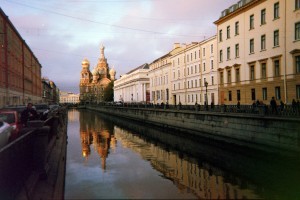 Church on Spilt Blood, St. Petersburg, Russia; Photo by Natylie S. Baldwin, 2015
Church on Spilt Blood, St. Petersburg, Russia; Photo by Natylie S. Baldwin, 2015In this article, long-time peace activist, Kathy Kelly, explains why she decided to join a citizen diplomacy delegation to Russia, led by Sharon Tennison and the Center for Citizen Initiatives. The delegation is currently in Crimea, after having spent several days in Moscow. They will also be visiting Krasnodar and St. Petersburg. The delegation’s other members include retired CIA analyst Ray McGovern and Col. Ann Wright.
It’s important for U.S. people to learn more, from ordinary Russian people, about their responses to troop build-up and new bases on their borders, threatening military exercises, and antagonistic arsenals of nuclear weapons on high alert. As President Vladimir Putin begins summoning a new Russian National Guard that could include 400,000 troops, it’s also important to hear how Russian people feel about this development.
Rather than foster cartoon[ish] versions of foreign policy, the media should help people recognize complexity in Russian society and include awareness of desires to live in peace on the part of most people in both countries.
U.S. people committed to peace making might help ordinary Russians sense the complexity of U.S. society and better understand how U.S. military spending and build up toward war adversely affects civil society in the U.S.
Read the full article here:
June 22, 2016
75th Anniversary of Nazi Invasion of Soviet Union – Operation Barbarossa
[image error]
(http://mapssite.blogspot.com/2008/06/...)
Due to a lack of natural barriers, such as oceans and mountain ranges, Russia has a history of invasions from all different directions, particularly from the west. Within the span of 25 years in the first half of the 20th century, Russia was invaded twice by Germany. The Soviet Union suffered up to 27 million deaths – 19 million of them civilians – in order to fight off the Nazis, according to ethnographer Michelle Parsons, and a third of the country was destroyed.
For a sense of perspective, the U.S. suffered 400, 000 deaths and saw no fighting on its territory during WWII (except for the attack at Pearl Harbor). The U.S. has a vast ocean on either side and relatively friendly neighbors to the north and south as well as possession of a nuclear arsenal since 1945. This has all likely contributed to the fact that the U.S. has not experienced a war on its soil for over 150 years – and that did not involve a foreign invasion. This, no doubt, has shaped a certain mentality about war in American culture, the fact that we have been pretty insulated from it.
On the other hand, Russia’s mentality has been shaped via a history of violation, destruction and loss of life on a level that would be difficult for the average American to wrap their mind around.
It was 75 years ago today that Adolph Hitler ordered Operation Barbarossa, the invasion of the Soviet Union, a move that would prove the extent of Hitler’s hubris, even going so far as to plan to celebrate the taking of Leningrad at the Astoria Hotel, having actually printed up the invitations.
 Astoria Hotel, St. Petersburg; Photo by Natylie S. Baldwin, 2015
Astoria Hotel, St. Petersburg; Photo by Natylie S. Baldwin, 2015
Irish professor of history, Geoffrey Roberts, described Operation Barbarossa as follows:
The aim of Barbarossa was to conquer Russia in the course of a single Blitzkrieg campaign. Hitler and and his generals thought that it would take only a few months to destroy the Red Army, capture Leningrad and Moscow and occupy the western half of the Soviet Union along a line from Archangel to Astrakhan. “The world will hold its breath,” said Hitler as he reassured his generals that all they had to do was kick the door in and the whole rotten structure of the Soviet communist system would collapse.
Another history professor, Michael Jabara Carley, at the University of Montreal, adds that British and U.S. intelligence virtually agreed with Hitler’s assessment that the Soviet Union would fall quickly in the face of the Wehrmacht. He also details how it was the Soviet Union that eventually, in British Prime Minister Winston Churchill’s words, “tore the guts out of the Wehrmacht,” despite the subsequent American narrative that it was the U.S. that primarily won WWII in Europe.
[Germany] made large territorial gains but at the loss of an estimated 7,000 casualties a day. This was a new experience for the Germans who until then had destroyed every adversary they faced with relatively little loss to themselves. Poland was essentially beaten in four days; France, in six. The British army was run out of Europe, first at Dunkirk, where it left all its arms, and then in Greece and Crete which were fresh British fiascos. There were also others later on in North Africa. The Wehrmacht was finally beaten at the battle of Moscow in December 1941, long after British and US intelligence said the war in the east would be over. It was the first time the Wehrmacht had suffered a strategic defeat….
1942 was another year of sorrow and sacrifice for the Soviet Union. Everyone knew that the Red Army was carrying the main burden of the war against Germany.
In the autumn Soviet forces fought with their backs against the Volga in Stalingrad. Someone said Stalingrad was Hell. «No, no», another replied, «it was ten times worse than Hell». The Red Army won this ferocious battle, and the last German soldiers surrendered on 3 February 1943, fifteen months before the Normandy landings in France. On that date there was not a single US or British division fighting on the ground in Europe, not one. In March 1943 the tally of German and Axis casualties was enormous: 68 German, 19 Romanian, 10 Hungarian and 10 Italian divisions were mauled or destroyed. That represented 43% of Axis forces in the east. Many historians and contemporaries from clerks in the British Foreign Office to President Franklin Roosevelt in Washington thought that Stalingrad marked the turning of the tide of war against Hitler.
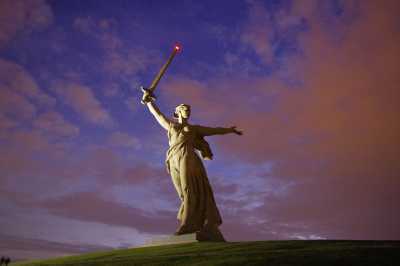
(The Motherland Calls, monument to Battle of Stalingrad, Volgograd, Russia; http://russia-insider.com/en/2015/02/...)
Carley also challenges the oft-cited accusation against the Soviet Union that it freely chose to enter into the 1939 Non-Aggression pact with Hitler instead of negotiating with what became the Allied powers to oppose Germany.
In May 1939 [Soviet Foreign Minister Vyacheslav] Molotov even offered support to Poland, quickly rejected by Warsaw. Had the Poles lost their senses; did they ever have any? When British and French delegations arrived in Moscow in August to discuss an anti-Nazi alliance, you might think they would have been serious about getting down to business. War was expected to break out at any time. But no, not even then: British instructions were to «go very slowly». The delegations did too. It took them five days to get to Russia in an old, chartered merchantman, making a top speed of 13 knots. The British head of delegation did not have written powers giving him authority to conclude an agreement with his Soviet «partners». For Stalin, that must have been the camel breaking straw. The Nazi-Soviet non-aggression pact was signed on 23 August 1939. The failure of the negotiations with the British and French led to the non-aggression pact, rather than the other way around.
June 20, 2016
The Stories We Tell

(American Progress, an 1872 painting by John Gast, is an allegorical representation of the modernization of the new west. Here Columbia, a personification of the United States, leads civilization westward with American settlers; https://en.wikipedia.org/wiki/Manifes...)
The Greater Good project at UC Berkeley recently published an article, The Science of the Story which discusses the science behind storytelling – how it affects humans on a biological level and its implications, both for forging empathy and for potentially exerting control. The article states:
Experiencing a story alters our neurochemical processes, and stories are a powerful force in shaping human behavior. In this way, stories are not just instruments of connection and entertainment but also of control.
This article naturally interested me as a fiction writer; but it interested me just as much as an analyst on Russia and U.S. foreign policy. In terms of the stories we tell about the other and how that shapes policy and vice versa, potentially leading to a vicious circle with terrible ramifications, understanding the consequences of the narrative is critical. My attempts, via articles and blog posts, to provide facts and information about Russia to counter the distortions we constantly hear from our politicians and media that paint that country in a bleak and ominous manner are an important part of that.
However, just as important as the story we tell about Russia (or any other country) is the story we tell about ourselves. As Stephen Kinzer discussed in the presentation I posted a few days ago, there has been a strong strain within our culture from its earliest days to view America as a shining city on a hill with a special God-given mission to remake the world in our image. In the 19th century it was known as Manifest Destiny, in the 20th century we represented the Free World against the “Evil Empire” during the Cold War, and today it is Exceptionalism with a mission of spreading democracy and a “Responsibility to Protect.”
As David S. Foglesong, an historian at Rutgers University, points out in his 2007 book The American Mission and the “Evil Empire,” this self-righteous impulse to convert or reform in relation to Russia has existed to varying degrees since the late 19th century:
There was something about Russia that made it more persistently fascinating. Since Russia could be seen as both like and unlike America – both Christian and heathen, European and Asiatic, white and dark – gazing at Russia involved the strange fascination of looking into a skewed mirror. The commonalities, such as youth, vast territory and frontier expansion that made Russia seem akin to the United States for much of the 19th century served to make Russia especially fitted for the role of “imaginary twin” or “dark double” that it assumed after the 1880’s and continued to play through the 20th century. Soviet communism, as an atheist and universalist ideology, came to seem, more than any other rival creed, the antithesis of the American spirit. Thus, more enduringly than any other country, Russia came to be seen as both an object of the American mission and the opposite of American virtues. (page 6)
This dynamic of fascination and revulsion and the role of “dark double” are reminiscent of what Carl Jung referred to as the “shadow” – that part of one’s self that one doesn’t like and doesn’t even wish to acknowledge. This denial inevitably leads to pathology in the individual.
Something similar can be seen in the earliest days of America’s messianic attitude toward Russia (and others) as Foglesong highlights how the height of the sanctimonious condemnations against the alleged sins of Tsarist Russia in the late 19th century coincided with the rise of domestic problems in America, which showed that all was far from perfect up on the hill. These included:
…declining religious faith, demoralizing materialism, dishonorable treatment of Native Americans, and the disenfranchisement and lynching of African-Americans. Discomfort with such troubles inclined journalists, editors, ministers, and other opinion leaders to emphasize problems in Russia that made American imperfections pale in comparison. Thus as Americans resolved uncertainties and conflicting notions about Russia, that country gradually came to serve as a “dark double” or “imaginary twin” for the United States….Treating Russia as both a whipping boy and a potential beneficiary of American philanthropy fostered in many Americans a heady sense of their country’s unique blessings, and reaffirmed their special role in the world. (pages 11-12)
This superior self-image and messianic tendency is rooted in the Puritan/Calvinist strain of Protestantism of the early European settlers. Foglesong also documents that the journalists and activists who were most responsible for portraying Russia in the late 19th and early 20th century as unusually brutal, backward and repressive and consequently stirring up public opinion against the Tsarist government, had religious backgrounds.
A prime example is George Kennan, a journalist who actually began his career as a skeptic of Russia’s revolutionary movement. But a sequence of events while on assignment investigating Russia’s exile system for Century magazine in 1884-85 resulted in a conversion of sorts. Kennan had a religious upbringing but became disillusioned in terms of trying to reconcile his faith with science and his observations during his travels as a journalist. After meetings with some of the revolutionaries, he began to sympathize with what he saw as their sophisticated western-style intellectualism. This sympathy deepened after he got sick in the borderlands between Russia and Mongolia and he encountered Russian exiles whose courage and endurance inspired him.
Kennan soon took up the revolutionaries’ cause against the “evil” Tsarist government. In his zeal, however, Kennan became less objective in his reporting and often disseminated embellished or even fabricated events and characterizations of the conditions in Russia, portraying the Tsarist government in the most simplistic and blackest terms.
As biographer Frederick Travis has shown, Kennan exaggerated conditions and invented episodes in order to paint Siberian prisons “in even blacker colors than the shade that some of them so richly deserved.” Only a few years earlier Kennan had maintained that the exile system was no worse than western prisons, but now he rejected such comparisons and insisted upon absolutist moral condemnation of tsarist brutality. (page 17)
Kennan also misrepresented how America was viewed by Russians, particularly Russian political dissidents who had largely been disabused of their idealistic notions of America and its capitalist system after visiting here in the 1870’s, subsequently exploring socialism as an alternative foundation for reform or revolution. Foglesong also makes the point that Kennan and other crusaders for a “free Russia” showed little interest in what the majority of Russians actually thought about the prospect of being “saved” by these self-appointed forces of light, a glaring omission in the American discourse.
The similarities of these early writers and their agenda to the dynamics of the secular missionary writers of today, like Masha Gessen, Edward Lucas and Anne Applebaum, with their never-ending depictions of contemporary Russia as a nightmarish cesspit lorded over by a demonic Putin, who is preventing the Russian masses from realizing their profound desire to become Americans in furry hats, is striking.
Of course, a narrative in which one necessarily represents a paragon of goodness requires an evil other as a contrast to continually demonstrate that goodness. And when one’s self-image is that of the righteous against an evil foe, it then justifies virtually any means to convert or vanquish the evil – coups, assassinations, massive bombing campaigns (“we had to destroy the village in order to save it”), perhaps even a nuclear first strike as some of president Kennedy’s military advisers had recommended in the early 1960’s – a possibility that some in Washington apparently have not taken off the table. The recent installation of a missile shield in Romania aimed at undermining Russia’s capability for a retaliatory nuclear strike, despite Washington’s implausible denials, only feeds into this dangerous notion.
Even the 19th century advocates of Manifest Destiny in all its expansionist flavors had their ideological opponents, those who challenged the notion that American righteousness was a self-evident truth and that it justified imposing its way on other parts of the world. Instead, they argued that the wisest path was for America to focus on solving its own problems, being the best country it could be and to, hence, serve as an example to others.
The story of being exceptional, with the implication that others are less and in need of reform, conversion or even destruction if they refuse American demands to figuratively “come to Jesus”, is a dangerous one. Where are those today who can offer a valuable alternative narrative that is needed more than ever in a nuclear-armed world?
June 18, 2016
The Dulles Brothers: The Genesis of the National Security State Today
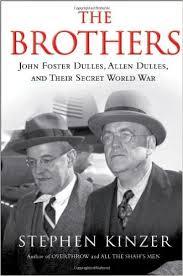
(Publisher: Times Books; 1st edition (October 1, 2013); http://www.amazon.com/Brothers-Foster...)
In this presentation, journalist Stephen Kinzer talks about his book, The Brothers, about Allen Dulles and John Foster Dulles. Allen was the head of the CIA from its inception, pursuant to the National Security Act of 1947*, under president Truman, through Eisenhower’s administration and into Kennedy’s. John Foster was Secretary of State for a good portion of his brother’s reign at the CIA (Dulles Airport is named after him). Kennedy fired Allen Dulles in 1962 for the Bay of Pigs debacle in which the CIA tried to mousetrap the president into invading Cuba. In this presentation, Kinzer discusses the three factors that influenced the Dulles brothers’ ideology and how it has carried over in our national security policy and philosophy. (57 minutes)
https://www.youtube.com/watch?v=I6aV-fUnb1M&feature=share
*The creation of our current national security apparatus, including the CIA, can be traced back to the National Security Act (NSA) signed by President Harry Truman in 1947 designed to “contain” the Soviet Union, which Truman and his staunchly anti-Communist advisors had decided was going to be the next enemy after WWII. Truman’s Secretary of State George Marshall had warned him at the time of the potential unaccountability and abuse of the agencies being created by this legislation, stating that it especially granted the CIA powers that were “almost unlimited.” The particularly egregious sentence cited by most critics of the NSA of 1947 is one that allows a president to direct the CIA to “perform such other functions and duties related to intelligence affecting the national security….”
June 16, 2016
Russians’ Vital Statistics Show They’re Edging Closer to Europe (Infant Mortality, Suicide, Murder Rates)
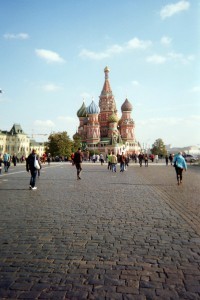 St. Basil’s Cathedral, Red Square, Moscow; Photo by Natylie S. Baldwin, 2015
St. Basil’s Cathedral, Red Square, Moscow; Photo by Natylie S. Baldwin, 2015As I’ve shown with other posts, Russia is doing a lot better than what a lot of western corporate media, and even some of our most senior politicians, claim. As the below excerpt of an article by demographics expert Mark Adomanis shows, Russia still has a ways to go on some mortality and quality of life issues, but the progress that has been made in the Putin era in certain areas is remarkable and deserves to be acknowledged:
As I hope the graphs demonstrate, a decade or two ago Russians were living in a totally different universe. The rates of death from various kinds of social ills were so much higher as to be essentially incomparable. However, quietly and with little fanfare Russia has seen significant improvements, which have not abated since the start of the economic slowdown at the end of 2014. Indeed, in early 2016 the evidence suggests that improvements to Russian public health have actually accelerated, with overall mortality plunging by around 5%.
Yes, there is still a lot of work to be done. The murder rate, in particular, is still a lot higher than it is in Europe. But the differences are increasingly differences of degree, not of kind. The suicide rate, for example, is currently about 76% higher in Russia than in the EU. That sounds absolutely terrible until you consider that, back in 2001, the Russian suicide rate was 340% of the EU’s.
Full article with graphs and charts here: http://www.intellinews.com/comment-russia-is-becoming-more-european-despite-the-politics-and-rhetoric-99883/
March 23, 2016
Building Civil Society in Russia - An Example from Krasnodar
Formerly a provincial town in a largely agricultural region, Krasnodar has recently evolved into a cosmopolitan city that is the 8th largest in the country. It saw a such a high rate of civic construction in 2014 that it surpassed even Moscow. As a consequence of the challenges presented by this rapid development, Krasnodar is showing its spirit of resourcefulness once again with the rise of the Public Council as an independent citizen initiative to make the city government's process more responsive to the needs and desires of the people living there.
Continue reading at:
http://russia-insider.com/en/culture/...
February 16, 2016
How Crimeans See the Ukraine Crisis
When we answered that we were, she told us she currently lived in Texas but was going to visit relatives in Crimea. As we chatted more and my travel mate and I explained our reason for going there – to see Crimea for ourselves and find out from the people living there what they thought about the Ukraine war and the peninsula’s reunification with Russia – it became apparent that this lady had a few things she wanted to get off her chest.
“You cannot separate Ukraine from Russia, there is too much culture and history together,” she said. Choking up on her words, she continued, “American people are good people – I have many friends in the U.S. – but their government leaders are not because they interfere too much in other places. I worry about Hillary [Clinton], you know. When [Libyan leader Muammar] Gaddafi was killed, she said ‘We came, we saw, he died. Ha ha.’ What kind of leader is that? Is she going to be the next president?”
She felt that, due to the violence on the Maidan and Washington’s interference in the form of Assistant Secretary of State for European Affairs Victoria Nuland’s manipulations, Putin’s intervention in Crimea was correct: “Putin did the right thing for Crimea, he is a good leader.”
When we landed in Simferopol, it was clear that the small airport had been recently renovated as everything was clean and freshly painted. After haggling down the price to something reasonable with the proprietor of a taxi service, we loaded ourselves into a cab in which stale cigarette smoke hung thick in the air.
My travel mate, who spoke functional Russian, asked the driver what he thought about Crimea’s reunification with Russia. He replied in broken English, “Historically and ethnically we are Russian, so it is better to be with Russia than Ukraine.” He acknowledged, however, that there were still many problems to be addressed and it would take time, but with Russia they now had hope.
His sentiments would be echoed throughout our stay in Crimea. Tatyana, a professional tour guide from Yalta, told us the next day that, in terms of road repair and airport renovation, there had been more infrastructure investment in one year under Russian governance than there had been in all the 23 years with post-Soviet Ukraine.
Looking around Simferopol, more such investment would obviously be needed. The roads and buildings had not been sufficiently maintained and it gave the place an air of being run down. Alongside that, however, were parks and trees, roads filled with people in cars and packed mini-buses during commute hours, and parents walking on sidewalks clutching the hands of their small children. Everyone was dressed in the typical Western attire one would see in the U.S. and most young people fingered smart phones.
On the bus ride from Simferopol to Yalta, there were many small houses in various stages of disrepair and frozen construction. My travel mate, who had been going in and out of Russia since the 1980s, remarked that it looked like the Soviet era.
As we approached the Yalta coastline, however, the lush trees and sparkling blue water that reflected a sunlit sky, emerged from the mountainous journey, dissipating the gloom. We toured Livadia Palace, the seasonal home of the czars from Alexander II to Nicholas II. It was also the location of the famous Yalta Conference of 1945 where Franklin Roosevelt, Winston Churchill and Josef Stalin met as WWII was winding down.
Afterwards, we walked down a lane littered with lovely and well-cared for “stray” cats that now took up residence on the grounds of the palace. Then we came to a small two-story restaurant where we had lunch with Tatyana, who articulated the feelings of many Crimeans about the Maidan protests that rocked Kiev in early 2014:
“No one asked us if we wanted to go along with Maidan. There are Russians as well as people who are a mix of Russian and Ukrainian here. We are not against Ukraine as many of us have relatives there, but Maidan was not simply a spontaneous protest. We are aware of the phone call with Victoria Nuland and [U.S. Ambassador] Geoffrey Pyatt, we saw the photos of her with [opposition leaders] Yatsenyuk, Tiagnibok [leader of Svoboda, the neo-fascist group that was condemned by the EU in 2012], and Klitschko on television. We saw the images of her handing out cookies to the protesters.”
We returned to Simferopol that evening and talked to a group of local small business entrepreneurs. They spoke of the many disruptions that the political upheaval with Ukraine and the subsequent reunification had caused. Kiev stopped paying salaries and pensions and even cut off electricity, which prompted Russia to provide generators to hospitals and other establishments where there were significant numbers of people in need.
In fact, Crimea had been dependent upon Ukraine for 70 percent of its power since reunification. Consequently, Russia is in the process of laying a power cable beneath the Kerch Strait from the Krasnodar region, which is now partially operational and will be fully operational by summer of 2016.
In the meantime, Russia had been paying Ukraine $211 million to supply Crimea with energy through the end of 2015. In what is perceived by many to be retaliation for seceding, Ukraine had seriously cut energy supplies to Crimea without notice numerous times throughout 2014 and raised prices by 15 percent. Similar issues with water supply have also been reported.
“Kiev claims they want us back, but then they alienate us even more with these kinds of actions,” said one of the entrepreneurs, shaking his head.
Continue reading at:
https://consortiumnews.com/2016/02/11...



